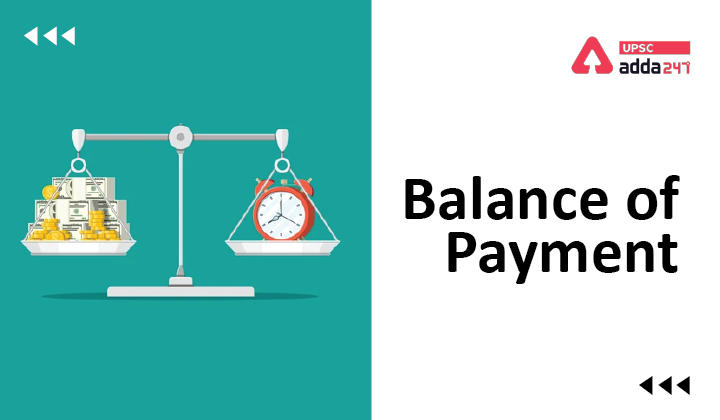Table of Contents
Balance of Payment of India
Balance of payment forms an important topic for UPSC Civil Services Exam. Every year, both in prelims and mains, candidate can expect questions from this section. Besides, a good understanding of balance of payment, help in understanding the various economic terms that are encountered in newspapers. In this article, we will discuss balance of payment in a comprehensive manner.
What is Balance of Payment (BoP)?
- Balance of payment is a statement that records every monetary transaction made between entities like business units, government, during any given period.
- It helps in monitoring the flow of funds that are coming in the country and help assess the financial situation of a country in a better manner.
Features of balance of payment
- It includes all the international transactions that includes individual, corporate and government transactions.
- In a perfect scenario i.e., when all the elements are correctly included in the balance of payment, the sum is always zero.
- It means that the inflow and outflow of funds has been balanced out.
- This, however, is an ideal situation and hence do not happen in a day-to-day situation.
- A surplus BOP indicates that a country’s funds has been on a positive side in international transactions. A BOP deficit, on the other side, indicates that a country’s funds has been negative in international transactions.
Importance of balance of payment
- BOP of a country reveals the financial condition of a country.
- BOP can be used as an indicator to foresee the position of domestic currency.
- BOP statements help in deciding the monetary and fiscal policy of a country.
Balance of payment elements
- There are three components of balance of payment—current account, capital account, Official reserve transactions and errors and omissions.
Current account
- It is a part of balance of payment that help in knowing the situation of exports and imports of a country. Current account surplus indicates that a country’s exports are more than its imports while current account deficit means a country’s imports are more than its exports.
- It is composed of following parts:
- Balance of Trade: It includes a country’s financial transactions while dealing with goods. So, balance of trade basically includes international transactions that involves sale/purchase of goods.
- Balance of Invisibles: It includes a country’s financial transactions while dealing with services. So, balance of invisible basically includes international transactions that involves sale/purchase of services.
- Transfer payment: Elements like donations, remittances are a component of transfer payment and hence are a part of current account.
Capital account
- Capital transactions include the purchase and sale of assets, both financial and non-financial like land and properties.
- There are three elements in capital account
- Loans and borrowings: It include all types of loans that are taken from both the private and public sectors located in foreign countries.
- Investments: It includes elements like Foreign Direct Investment (FDI), Foreign Portfolio Investment (FPI), among others.
- Foreign exchange reserves: Foreign exchange reserves are held by the central bank of a country, RBI in our case, to monitor the exchange rate.
Official reserve transactions
- It is conducted by the central bank in case of the BOP deficit or BOP surplus. The transactions are made by the Central Bank, RBI in our case, which cause changes in the country’s official reserves of foreign exchange.
Errors and Omissions
- Net errors and omissions reflect the imbalances resulting from imperfections in source data and compilation of the balance of payments accounts. Net errors and omissions constitute a residual category needed to ensure that accounts in the balance of payments statement sum to zero.
FAQs
- What is India’s Balance of Payment status?
Ans. India is a balance of payment surplus country due to our capital account surplus. Though, we are facing current account deficit, our capital account surplus is much higher that leads to balance of payment surplus.
- When India witnessed a current account surplus?
Ans. India’s current account balance recorded a surplus of US$ 6.5 billion (0.9 per cent of GDP) in Q1:2021-22 as against a deficit of US$ 8.1 billion (1.0 per cent of GDP) in Q4:2020-21.
- Is current account surplus always good?
Ans. Normally, current account surplus is a good sign of an economy. It means the country’s exports is more than its imports. However, it is not always good. For an import dependent country like India, when current account balance records a surplus, it means that the demand has reduced that has led to reduction in imports. Reduction in demand is a sign of economic stagnancy. So, a current account surplus does not always translate into strong economic situation.
Also Read:




 TSPSC Group 1 Question Paper 2024, Downl...
TSPSC Group 1 Question Paper 2024, Downl...
 TSPSC Group 1 Answer key 2024 Out, Downl...
TSPSC Group 1 Answer key 2024 Out, Downl...
 Cabinet Ministers of India 2024, New Cab...
Cabinet Ministers of India 2024, New Cab...







